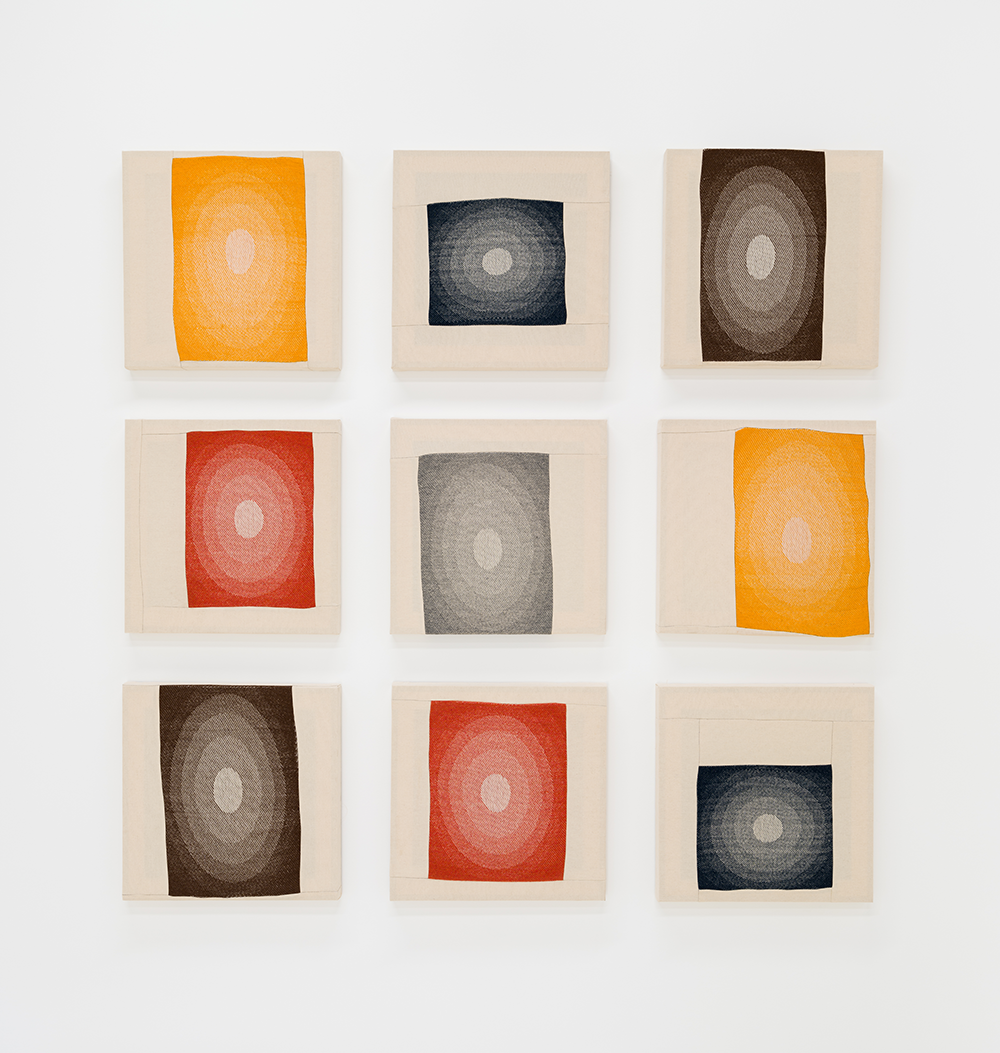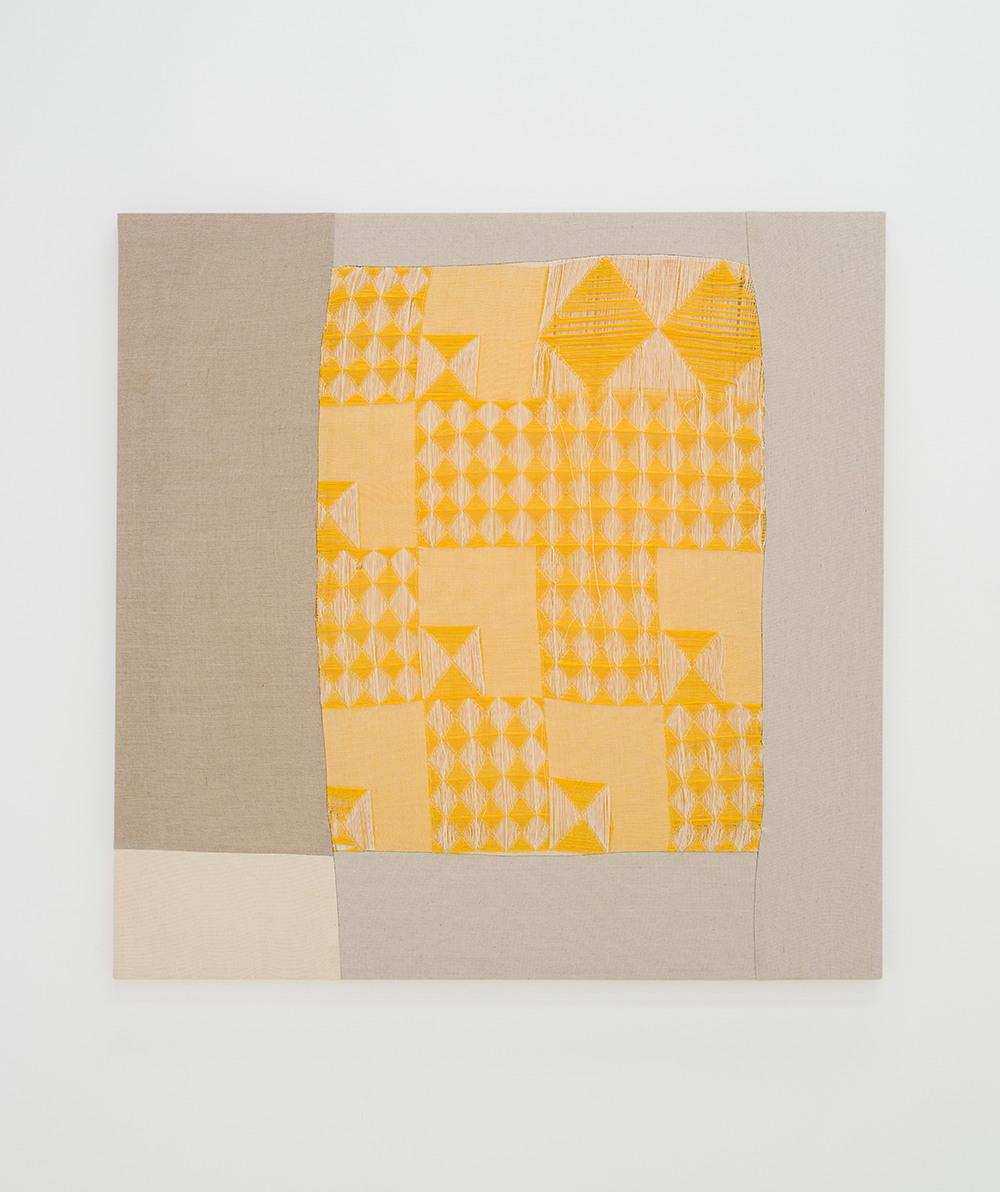The work of Jovencio de la Paz exists between the ideal and abstract and what the press release referred to as the “fallibility of physical space.”I don’t think of “physical space” as a “fallible” domain, nor are digitally constructed spaces necessarily ideal. Yet being surrounded by the weavings in this show was to be palpably aware of that sense of suspension between the abstract or constructed ideal and the perceptual and physical fallibilities of their intersection, as well as by some of the textural, serial and aleatory tropes of 20th and 21st century art. The artist uses the Jacquard loom like a “prepared” color organ, as if Jacquard and computerized elements are already a standard loom’s “preparation.” De la Paz has complicated composition and construction with digital editing and specialized software elements, applied both remotely and manually.
The warped grid hangings (executed in part with software co-designed with engineer Michael Mack and based upon Barracelli’s “Bio Numeric Organism” software) at first suggested weavings inspired by Uzbek or Tajik traditions, showing an electrifying vibrancy. Warped Grid (1.0) (all works 2022 unless otherwise indicated), with its protuberant gold-yellow thread in staggered ranks against the white warp of the weave, seemed to glow from the rear wall of the gallery, as if absorbing then throwing the available light back into the room.

Jovencio de la Paz, 10 Failed Circles, 2021. Handwoven, Jacquard textile and cotton, 70 x 70 x 1.5 in (177.8 x 177.8 x 3.81 cm). Courtesy of the artist and Chris Sharp gallery.
But Warped Grid (1.1) with its pale pink, slate gray and lozenged surface against alternating bars of pink and dove gray, drew me from its outward effervescence into the depths of its chambers like hollowed jewels—its jacquard-woven feints, wefts of pink and slate threads moving into whorls and caverns deflected from its loose, eccentric butterfly waffling. Yet if Warped Grid (1.0)‘lit’ the gallery,The Light of Kabir, in its morphing tessellation and richly variegated textures in indigo, red-orange, and slate gray, seemed the most fully realized expression of the “complex space of potential” the artist intends as a reflection of their non-binary identity. The “light” here is in the weaving—red-orange horizontals, woven white lozenges and raised indigo blues create a textural dissonance yet are harmonized into the torquing, spiraling movement of the weaving.
The “warp” is literally in the weft in 10 Failed Circles (2021).Circles round an “empty” center in primary and gray, like the Albers Homage to the Square, but here De la Paz has used them as a foundation for his more complex and ambiguous spatial and chromatic constructions.
The skewed execution of the “bent” pyramids (inspired by Pharaoh Sneferu’s Bent Pyramid of Dahshur) magnifies their success. Bent Pyramid (1.1) renders them as ghostly sailboats (with creamy whites as “sails”) dissolving into the lower register depths as if prismatic reflections. An Ocean for Eloise (2021), evokes something of both the Bauhaus and De Stijl, becoming a Feininger-esque iceberg nestling triangular configurations of checkerboard squares in slate, indigo, and pale blue—an appropriately elegiac poem for the failing grid we’ve made of the planet.


